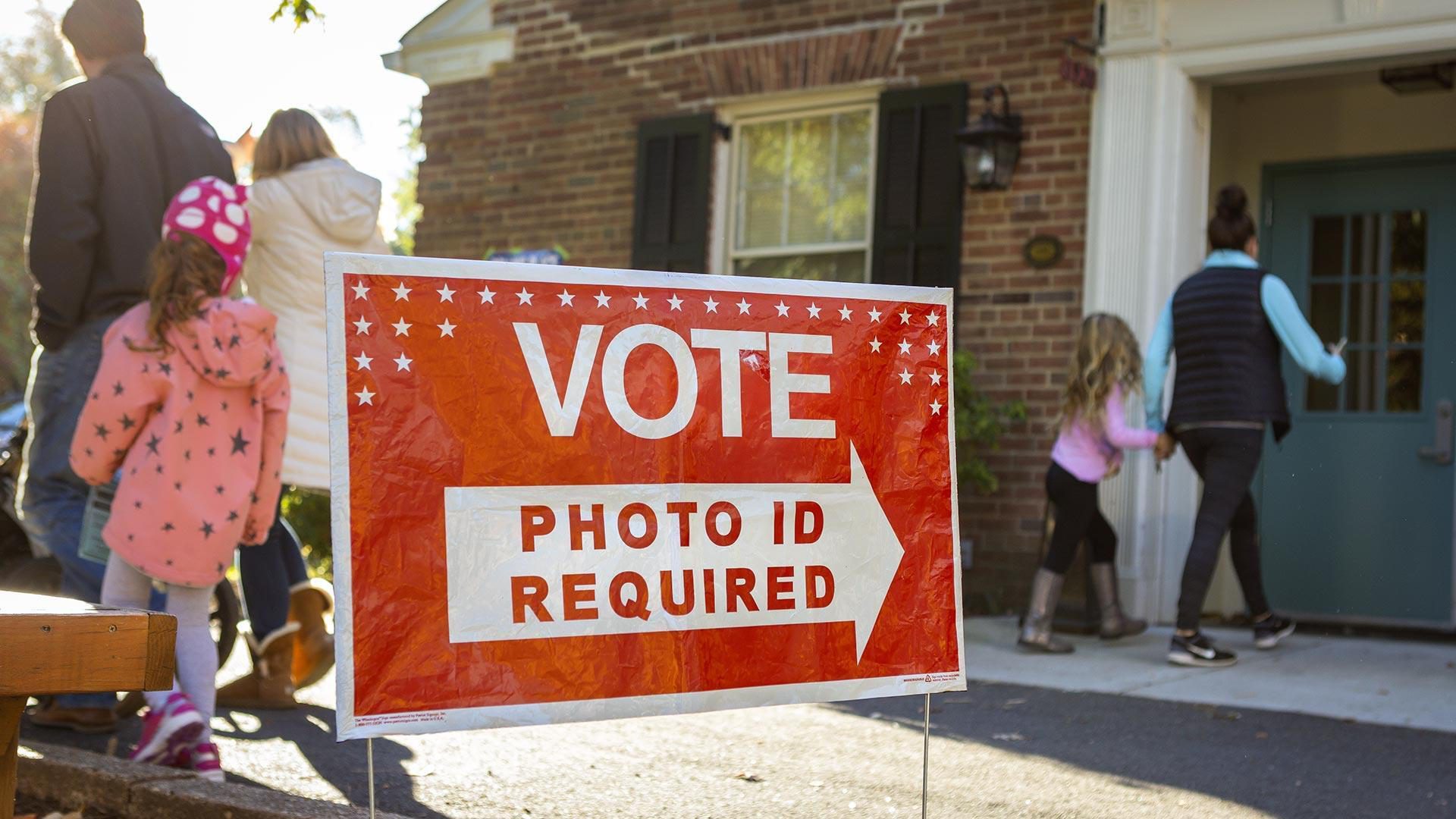- April 13, 2023
- By Maryland Today Staff
Millions of voting-age Americans lack a current government-issued photo ID, even as a growing number of states enact new or stricter voter ID requirements, according to an analysis released today by University of Maryland researchers and a leading voting rights organization.
The report from UMD’s Center for Democracy and Civic Engagement (CDCE) and VoteRiders, which focuses on ID education and assistance, analyzed data from the American National Election Studies’ 2020 Time-Series Study, a survey of voting-age Americans’ political attitudes and behaviors. Researchers zeroed in on responses about possession of a non-expired driver’s license, U.S. passport or other form of valid, government-issued photo ID, and found deep disparities.
“With the demographics most likely to lack valid voter ID being among the fastest-growing demographic groups in the country—including young people, people of color and particularly young people of color—the potential for voter ID laws to keep more eligible citizens from casting a ballot is likely to rise as well as we head toward the 2024 elections and beyond,” said Michael Hanmer, CDCE director, professor of government and politics and a co-author of the analysis.
Overall, 36 states have a law that requires or requests voters to show a form of ID before they cast their ballots. Since the 2020 elections, 16 states have enacted new ID laws or added restrictions to their existing ID laws. Voter ID laws passed after the 2020 elections in North Carolina and Montana are also currently being litigated in their respective state supreme courts.
“This data reinforces how the shifting landscape of state-level voter ID laws creates confusion and challenges for millions of Americans seeking to make their voices heard in our democracy, something our staff working on the ground across the country see firsthand every day,” said Lauren Kunis, CEO and executive director of VoteRiders. “As states rapidly pass new and stricter voter ID laws, ensuring that voters are informed about these changes and have help accessing the IDs they need to cast their ballots has never been more important.”
Key findings include:
- Nearly 29 million voting-age U.S. citizens lacked a valid driver’s license and over 7 million had no other form of non-expired government-issued photo identification.
- In states with strict photo identification laws in 2020, over 3 million voting-age U.S. citizens did not have a current driver’s license, and over 1 million did not have a non-expired government-issued photo identification.
- More than 11 million people ages 18-29 did not have a current driver’s license, and more than 3 million did not have any unexpired government issued photo ID.
- Members of underrepresented racial and ethnic groups were less likely to have a current driver’s license or other government-issued photo ID. An estimated 1.86 million Black non-Hispanic Americans (6.2%) and 1.86 million Hispanic Americans (6.1%) lack a photo ID, as do 4.5% of those who identify as Native American, Native Alaskan or another race. This compares to just 2.3% of White non-Hispanic Americans and 1.6% of Asian, Native Hawaiian or other Pacific Islander Americans.
- Individuals with a high school degree or less were the least likely of people of all educational levels to have a current driver’s license or any photo ID. Over 18.5 million people who did not complete high school or whose highest level of education is a high school degree did not have a driver’s license.
- The analysis found a strong relationship between income and lack of a driver’s license, with adult Americans who earn less than $30,000 lacking a driver’s license at a rate about five times greater than the highest income category of $100,000 or more.
- Those who were not registered and those who did not vote in 2020 were far more likely to lack a current driver’s license and any photo ID. Adult Americans who were not registered to vote were three times more likely to lack a driver’s license (30%) than those who were registered (11%). The results were similar when comparing 2020 non-voters to 2020 voters, demonstrating the disproportionate barrier that voter ID laws may create for non-voters or infrequent voters, as well as new or first-time voters.
This article is based on a release from VoteRiders.
Topics
Research